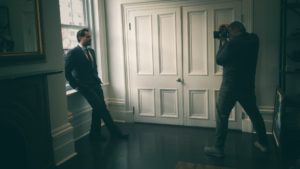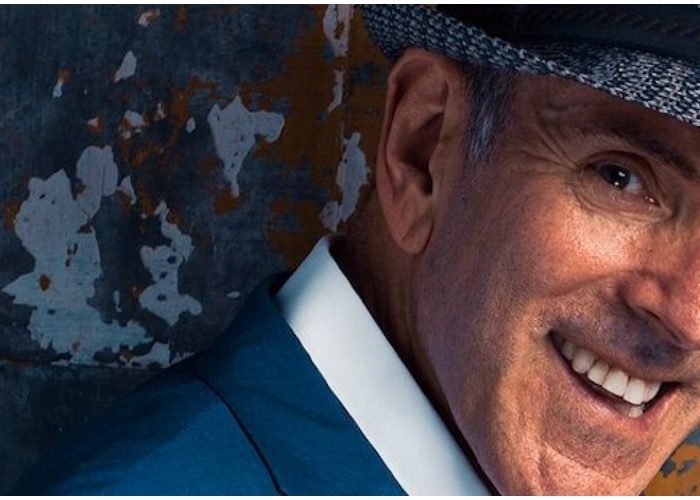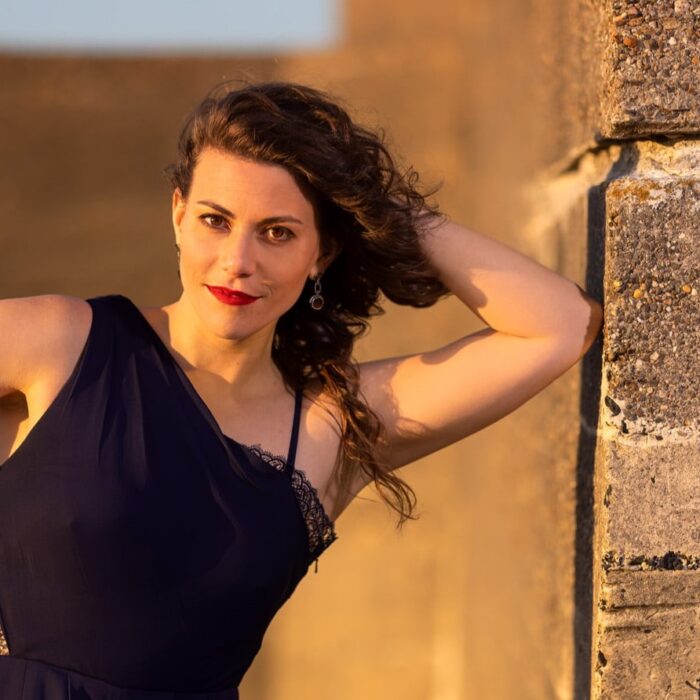
The Art Of Operatic Photography – How Dario Acosta Captures Opera’s Greatest Stars on Camera
By Francisco SalazarHow do you create an image that captures the essence of a person? That is the constant question that photographer Dario Acosta always questions when he is shooting a singer in his New York studio.
“Ideally I don’t want to be a part of that world. I want you to look at the photo and not think I was there. I want you to see the artist, that mood. I want you to forget that its a photograph. That it was in that moment and that we were in that moment. I think that is the goal,” Acosta said in a recent interview with OperaWire.
Born in Cuba, Acosta has worked as a portrait photographer on various advertisements, magazines and album covers across the country before becoming the go-to photographer for opera’s biggest stars and the renown magazine Opera News over the past 12 years.
But Acosta did not start in this setting.
Beginnings in Opera
Acosta always had affinity for opera and classical music throughout his years. He discovered the music in cartoons like “Bugs Bunny” and acquired a taste over time. He admits it was the “emotion” that really captured him.
However, when he first graduated the School Of Visual Arts, the opera world was the last place he saw himself.
“I was shooting work for advertising and shooting for Latina magazine, People en Español and I was kind of pursuing the Latin direction.”
But then a chance encounter with Opera News set him in a new path and it was his first shoot that started to get him recognition in the world of opera.
“I did a shoot for Opera News with Ira Siff. He was my first opera portrait and from there it’s been a snowball year after year. One assignment one year and two or three assignments the next year and then it’s just increasing.”
That assignment led him to photographing stars like Plácido Domingo, Anna Netrebko, Deborah Voigt and Sherill Milnes.
But Acosta admits it’s due to one thing – “Trust and devotion.” These two elements have given these stars the confidence in his talents. Acosta admits that when he decided to shoot people he never wanted to create headshots. He wanted to approach each photograph as an “artist.”
“I want put something out that they deserve and captures the essence of the singer.”
For Acosta this process is always an emotional and fun experience.
Behind the Scenes
When Acosta is about to do a shoot with an artist he always makes sure to know as much as he can about the singer.
“I do research on them to get a sense of the way they are. Whether they are a musician or a singer. What they sound like. What their approach is like. What they do and where they’re going. What they’ve done. Mostly to familiarize with them and have a conversation with them. To have some sort of neutral ground. You’d be surprised how much in common we all have at some point.”
Once the research is done he likes to communicate with the artist. Acosta admits that sometimes these big operatic figures are shy and they need to feel comfortable with who they are working with. Most of the communication happens through email but these conversations are important to develop ideas.
“There is a lot of talk before hand about their portrait and their style and what they want out of their photo shoot. How they see themselves and how they want to portray themselves,” Acosta said.
However, not everyone is into conversing so it all comes on set.
While some photographers are about planning every step of the way and knowing how everything is going to be, Acosta prefers not to plan. When most of the singers arrive there are no lights set up and the studio is bare.
“When I shoot in the studio it’s like finger painting. It’s fun. I have to rely on subjects to do what I do so when I’m going to shoot on the studio or on location it’s an opportunity to get the crayons or the paint and do my thing. It’s never stressful. It’s always fun and I know we have time that we’re going to get stuff no matter what.”
“When one thing does not work, we just move on to something else. I think most of the people I work with see I’m not stressed and I’ve been doing this for a while that you build confidence that you can do something.”
So when the singers arrive Acosta allows them to get comfortable in their wardrobe and makeup and allows time to talk a little about the ideas generating for the shoot.
“We talk with them and by the time they shoot it’s been three hours. So by the time we shoot we’ve developed the ideas and a chemistry between us that starts to build and build. By the end of the day we’re friends. It’s such an intense kind of thing.”
One thing Acosta admits is that he prefers to have the least amount of people on a set. Sometimes publicists attend the shoot but for the most part singers “are pretty trusting. It makes it a lot more comfortable.”
Another element that is necessary for a shoot is music.
“Music’s always playing, but never opera, never classical. We all love it and I listen to classical music all the time working. But never shooting. Music is part of their lives and it’s so important. It helps create a mood. I like everything and whatever they feel comfortable with I’ll put on.”
Shoots are draining and can be emotional journeys for Acosta and the singer as the entire process can start around 9:30 in the morning and last until five or six in the evening. But the amount of images captured can go anywhere from 2,500 to 3,000.
“I’ll start shooting and switch gears and come back to that. It’s all kind of all over the place. The minimum I think I’ve shot is 1,500.”
And one of the things he always likes to do is shoot a range of photos that can be used either for CD covers or promotional stills.
As a result the editing process will never be immediate.
Choosing the Right Photo
Arriving at the final image on Opera News or on a CD cover is never easy for the photographer or the singer. In fact, Acosta attests that it can be the hardest part, especially when there are so many great photos.
Because there are so many photos taken at the end of a shoot, Acosta always takes a week or so to get a fresh look at them.
“When you’re shooting and looking at something, certain things are more important at that moment because maybe something was more difficult to get so all of a sudden you love it because it was so difficult and you got it. And then later on when it all passes you can look at it with fresh eyes. That’s when you see stuff that you didn’t see before.”
It never takes one sitting for Acosta to decide his favorites and when he looks through each image, he chooses 200 photos out of the 2,500 that he thinks are the best. He then sends it to the singer and then they have the difficult task of picking a few.
“They always ask for my opinions but I have a hard time picking. There are great shots and when they ask me what I like, it’s the stuff I sent them. I cut out everything that I don’t think will work.”
But ultimately he allows the singer to choose. And he is always making sure that the photo represents what it’s intended for, whether a CD cover or a website.
The Final Product
No matter how much he edits or makes sure the photo is beautiful, Acosta always feels it incomplete until its published.
“Somehow the job is just not complete until I see it. Like shots that I’ve done in the last six months, there are some that haven’t been printed yet because there are lag times. I just can’t wait to see the stuff printed. When I do see it printed, it’s awesome. I’m always taking pictures when I see a poster someplace.”
Evolution and friendship
Regardless of all the recognition, Acosta remains a very introverted person. He doesn’t like photographs and prefers to be out of the spotlight. He wants his art to say everything and as a result he continues to evolve by learning from everything he does.
One thing that keeps him exploring is shooting on film. While he no longer does photo shoots on film due to the longer processing and scanning, he believes shooting on film is essential to remain detailed.
“I shoot film because it slows everything down on a personal level. I have some great cameras and I have my old film cameras. You have whatever 12, 36 exposures that you have to be accountable for. So when you go to press you slow down and you think about it. What we used to do back in the day was shoot film. I like film. I like the aspect of waiting and seeing what you got. And you can’t look at the back of the camera. That just slows you down.”
But he admits that digital has its own limitations that as a photographer he needs to accept and find ways to improve those imitations.
“You can keep shooting until you’ve got it. Five years ago my work was different from what it is now. In five years it will be as well. It’s a constant. You don’t know everything and you’re always learning. You get inspiration from exhibits, movies, music. I think my work has gotten looser and the direction I want to go is more natural and a looser feel. Everything is finessed.”
And that evolution is also seen when he shoots a singer again. Since there is a trust established, it allows him to try new things and thus grow.
“I never do anything over and over again because it all depends what’s happening with the light today or how we’re going to light it and how they feel. Maybe it’s a day we shoot things that are more happy and another day it could be darker. Shooting Opera singers is a great freedom because opera is so dramatic that you can get away with anything with them. Whatever emotions or whatever drama you can use is just a positive.”
With so much experience in the business Acosta feels gratified when he sees singers get emotional at seeing the photos.
“The more you do something, you own that skill. And then it’s all nuances. I am really good at seeing those nuances. I can’t tell you how happy I get when you see those people tear up and just get emotional when they see the photographs and say ‘I never saw myself that way.’ And these are people that are stage people that are used to being in the spotlight. And you show them the best of them. And it’s the most beautiful part of the whole shoot. When you see them get emotional. It’s great.”


